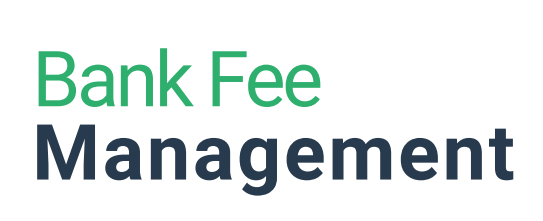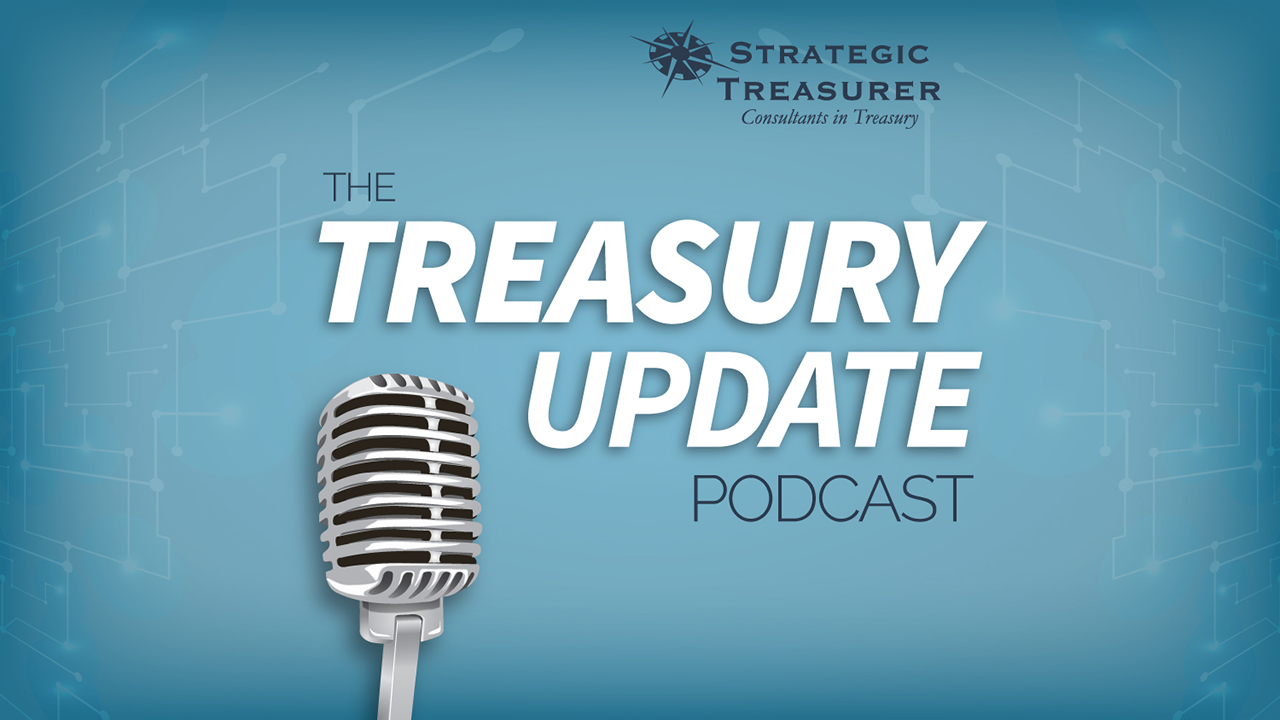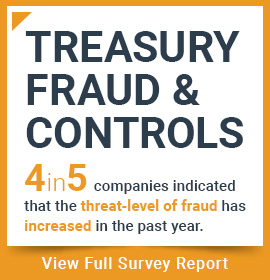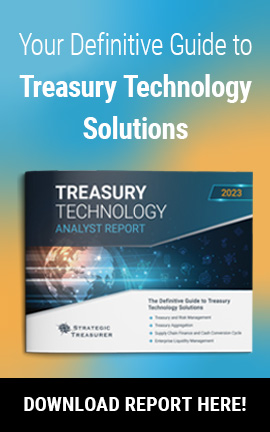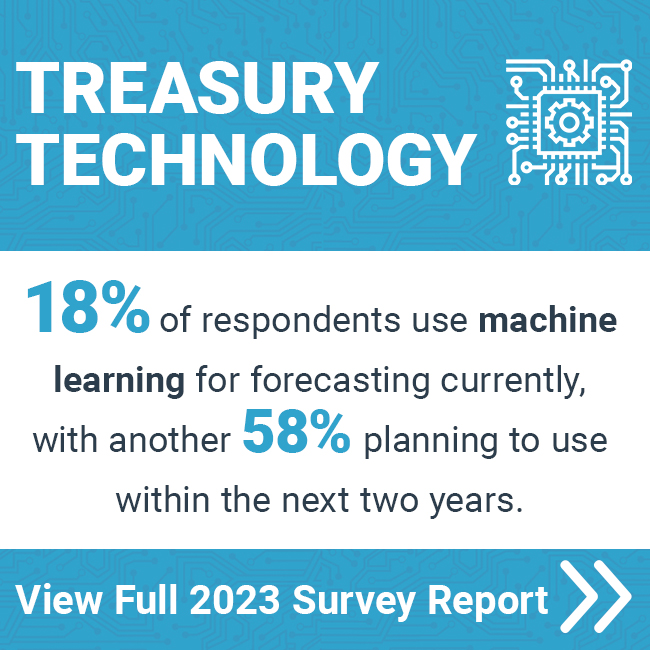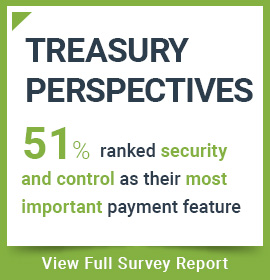
Episode 43
Bank Fee Management
Does managing bank fees seem like a daunting endeavor? On this episode of the podcast, Managing Partner Craig Jeffery sits down with Senior Treasury Consultant Stephanie Villatoro to discuss the necessity of regular management review, the importance of fee differentiation, and the value of market awareness on both an international and domestic level. Listen in to find out how to maintain proper bank fee oversight.
Host:
Speaker:
Craig Jeffery, Strategic Treasurer


Stephanie Villatoro, Strategic Treasurer


Episode Transcription - Bank Fee Management (Strategic Treasurer)
Intro: Does managing bank fees seem like a daunting endeavor? On this episode of the podcast, managing partner Craig Jeffery sits down with senior treasury consultant Stephanie Villatoro, to discuss necessity of regular management practice review, the importance of fee differentiation and analysis and the value of market awareness an international and domestic level. Listen in to find out how to maintain proper bank fee oversight.
Craig Jeffery: Welcome to the Treasury Update Podcast. This is Craig Jeffery, and I’m here with Stephanie Villatoro, also from Strategic Treasurer. The topic today is managing bank fees, even if you hate, or perhaps it should be, even when you hate it.
Craig Jeffery: This podcast is a follow on to the bank relationship podcast where Stephanie and I discussed having a 360 view of your bank relationships. Welcome to the podcast, Stephanie.
S. Villatoro: Thank you, Craig.
Craig Jeffery: Now bank fee management seems so mundane. Why should people care? I’m just going to say a few things before we get into it.
Craig Jeffery: When we think about managing services and fees, we think of cash management services. In the U.S. there’s account analysis fees. There’s also credit card fees through your providers. Custody accounts for those that have heavy investment activity. Trust account for some organizations as well as FX transaction fees. So when we think about managing service and fees, we think about this whole topic.
Craig Jeffery: I guess the first question, Stephanie, and you look after the bank fee management process for a number of companies, and run that at Strategic Treasurer. Why should people care? This is mundane. It’s paying bills. Why does it matter? Why should people continue to listen to this podcast?
S. Villatoro: So if you pay your mortgage, you’re not going to pay something that’s more than what you should be paying. So it’s the same thing with bank fees. You’re not going to pay more than what you’re contracted to do. You don’t pay a higher interest just because they’re charging you a higher interest. You pay the interest that is in the contract. It is the same thing with bank fees. Whether it is merchant card, whether it is cash management services, trust or even affects, for that matter. That is the main reason that people look at it, is to pay what they’re supposed to pay. You review invoices and AP. From and account analysis standpoint, those are not reviewed necessarily, the same why. It’s on treasury’s responsibility, not an AP person.
Craig Jeffery: Now just to interject there, you used a term account analysis, which is not going to be familiar to many people that are outside the U.S., outside of treasury. What is account analysis. What’s an account analysis thing?
S. Villatoro: Account analysis for U.S. banks for your cash management fees that you pay on your bank account for services that you utilize. It is an invoice. It’s an invoice of everything you’ve utilized in one calendar month for services at the bank, whether it is wire fees, information reporting. It can also be any other check outsourcing fees, disbursements, anything that goes through your bank account that you’re charged for. They group all those fees together on one invoice and charge you monthly.
Craig Jeffery: Why don’t they simply call it an invoice?
S. Villatoro: They don’t call it an invoice because they don’t bill it the same way. There’s typically earrings credit related to it as well, where the net some percentage of balances that you keep with the bank, against the fees as well.
Craig Jeffery: Because banks haven’t always been able to pay interest on accounts, they use the balances to off-set the charges that would normally come in. So it’s a complex way of handling or getting around that. So you’ve basically described the process of managing fees because everyone has to look and review the expenses they have. Why else might they look at it?
S. Villatoro: Other reasons that you would look at it is, one, banks make mistakes. So their systems don’t always necessarily talk to one another, contract prices may revert back to standard pricing. So there’s multiple reasons to be looking at your contract-related prices for any variances from and month to month basis. That’s just based on your actual fee. So you have a volume, you have a price. Making sure that price is correct.
S. Villatoro: The other reasons that you might be looking at your bank fees are additional volumes. So maybe a service has increased, so you’ve increased a certain area of your bank fees. That might be, for example, ACH. So a different type of electronic payment, instead of check. So it’s a replacement service. As you utilize that service more and more, you would get a volume discount. So as you hit another tier, there’s an area for reduction in your standard contract pricing that you can negotiate with your bank.
S. Villatoro: Another is underutilized services. Are you no longer using a service, and you need to ask the bank to remove it. It has run off already, and you just haven’t asked for them to take that maintenance cost off. Or maybe you just have one or two items running through that you need to transition over.
S. Villatoro: A third reason might be spiking in fees for a service, or and area where you have a service but its additional cost because somethings going wrong. You make wire payments every day. All of a sudden you have a spike in wire repair fees. So what’s the underlying issue that’s going on there? Is it on the bank’s side or is it actually in your underlying system.
Craig Jeffery: So it’s a way to monitor your operational efficiency, your errors or issues. Most of those answers were about the cash management side of the fees that corporations pay their banks. What about merchant card activity. The credit card processing. What are a couple areas that you would be on the lookout for?
S. Villatoro: Yes. There are two main areas. We would look out for merchant card. One is just making sure your merchant card provider is giving you the best rate for the volumes that you have going through. Are they giving you a good rate that’s in the market today? Is it a standard rate, or do you have something that’s more applicable to where your volumes are? That is one way you can reduce a cost. But that’s just one small fee.
S. Villatoro: The other area is when get to the card associations, you have various tiers of these levels of card processing. Making sure you’re processing at the lowest tier possible for your business. And there’s ways that you can reduce that, or things that you can begin to look at. If you’re a level one data where you’re processing at the highest rate, how can you reduce that to a level two or a level three?
Craig Jeffery: Now shifting back to cash management fees. You talked about spiking and total cost because your fees go up because your volumes have gone up because of errors, exceptions, someone pulling data from the bank system and using it to a great extent, or wire repair fees because some feed has gone wrong. We spoke earlier when we were talking about this podcast and the topic, about some of the other challenges that happened in terms of errors that can be made by banks, both in the bank’s favor, and in the favor of the organization that’s being billed. This had to do with how that data gets into the billing system. Sometimes it’s very automated. Sometimes elements are dropped. There’s a loss in transmission. They may not be balancing things. Sometimes items are even keyed in from systems that there’s not a connection. It’s keyed in. And those things can be keyed in wrong, or they can maybe not even make it to the billing system. So sometimes banks make errors in their favor, and not in their favor.
Craig Jeffery: Anything else on those that someone should just be aware of, to have that reasonable view.
S. Villatoro: Yeah. So you’re right. Banks can make errors that are not in their favor, where they have multiple systems feeding into that invoice or analysis statement.
S. Villatoro: The other way, that’s not in favor of a client or a customer is annually prices may revert back to standard pricing and negotiated rates aren’t put in on a timely basis. This happens pretty consistently across banks. So you have to be on the look out, usually at your end, December, January, February time frames when they do revert back, and they make system changes even throughout the year, that different price points could change back to standard pricing instead of your negotiated rate.
Craig Jeffery: What are some of the key differences between fees as banks charge them in the U.S. and just speaking generally. Obviously there’s regional and in-country differences. What are some of the key differences between U.S. and other countries in how the levy these types of fees?
S. Villatoro: I think one of the main differences when you’re looking at U.S. versus other countries, is the U.S. invoicing and fees are very detailed, so they will charge a lot more for one transaction than other countries where it’s more bundled. So you’ll see less transactions from a fee standpoint. But they’re at a higher price point. So its difficult to compare from that stand point.
S. Villatoro: Other things that I see in other countries is they may not bundle all these prices to once a month fee, where they charge you one time for everything that’s occurred in the month. But they charge you at the transaction time, or they charge you maybe on a daily basis. So there’s different timings of fees.
S. Villatoro: Another difference is, instead of per transaction at that point, they well bundle similar fees. So wire fees could be bundled across different branches, where you don’t have transparency into volume and individual prices.
Craig Jeffery: I know there’s a ton of detail on that, and I do want to keep it at a high level. I know you also had mentioned things to look out for could be banking structures could be overly complex, and challenging to know what are the services are, what organization is being charged, how do you allocate those to the organization.
Craig Jeffery: But let’s just shift over to the questions about what types of bank analysis should a company perform?
S. Villatoro: So there’s two main types, Craig, the first being operational. This is the most simplistic type of bank fee review. Your contract price, looking at are you being charged that price for your volumes. Some of those may be tiered. So you may have varying prices as your volume increases. Basically reviewing that. You were charged your correct price that you’re in contract with.
Craig Jeffery: This can be done visually, or with system. It’s just straight up comparison.
S. Villatoro: Mm-hmm (affirmative).
Craig Jeffery: Okay.
S. Villatoro: Straight up comparison. So that’s the most simplistic. You’re just making sure that if you’re under contract, you’re being charged correctly.
S. Villatoro: The second is more strategic. This gets into a little more analysis, and it’s not straight forward. So you’re looking at identifying different types of opportunities in your bank structure. Can you consolidate banks? Do you have two similar banks that are performing the same type of operation in the same country? Can you just consolidate that and get a better pricing, because of a higher volume? Another is, are your volumes turning higher or lower in different areas of the world or different services? Where can you move things around or shift to maybe a new service. Moving from paper to electronic. Those are different areas that you can look at volume trends. It could be an operational change, in that shift from paper to electronic. Could be operational, but it could be also, you’re moving out of a country, and maybe you’re expanding into others. You’re looking at operational changes and new opportunities there.
S. Villatoro: Then also just rationalizing your fees, as well as negotiating. You need to review those on a regular basis. Make sure you are paying benchmarked rates that are market rates. Bank fees change from year to year. Up, down. They are not consistent.
Craig Jeffery: Yeah, and your business changes, activity shifts over time. It will get out of alignment if you’re not reviewing those at a frequent or regular systematic basis.
S. Villatoro: That’s not annual. It could be every three to five years. It just depends on when those operational shifts occur.
Craig Jeffery: Having been responsible in the past for bank fees, analysis fees, custody fees, that was such a pain, and it seemed so much less strategic than managing relationships, ensuring that your banks can provide you with the advice that’s needed over time. They can support you with capital and services, and quality levels. Paying and reviewing analysis statements, reviewing bank charges, seems very mundane. I would be it in the category of headaches that have to be done.
Craig Jeffery: How can a company get started and manage the process, either internally, or on an outsource basis? What are some of the steps? Let’s go through them quickly to keep people paying attention.
S. Villatoro: Certainly. There’s about seven steps of looking at your bank fee process. I would say it’s mundane for most, except for those that like to find the needle in the haystack. There’s only a few of us out there.
S. Villatoro: The first being just sourcing your data. How are you going to receive it? Most common for simple organization, maybe with one or two banks, you’re going to get a PDF. But then you look at systems that can actually intake files and help you with that mundane analysis to get that quicker. Especially when you have a lot. So there’s systems can handle different types of files, whether they’re an EDI822, or a type of XML file, which is the camt.086 and the twist files. And there’s issues with different files, in regards, there’s some past no value systems can’t handle that. So you have to look at the system you’re utilizing and what is the best format for that system.
S. Villatoro: Then you’re looking at aggregating that data. That’s your second step. So once you have I, how do you aggregate it and normalize it, because from the U.S. to other countries, you have to normalize the data because it is not consistent across U.S. banks to U.S. bank, and it’s definitely not consistent across the world.
S. Villatoro: Then it’s analyzing. Looking for different opportunities for identifying savings. Looking at it by category, if you’re looking at information reporting versus your payments. Then you can look at negotiating. Also, when you’re negotiating, you have to look at this more in a relationship context. Your bank relationships are relationships. They are long term minded. You do not want to change banks. It’s very complex and difficult to do that. So those fee decreases and increases should be marketable of what is in the marketplace today. And just follow up and following through with them. It’s kind of the making sure they’re input, making sure that everything is processed appropriately at the end, after the negotiation.
Craig Jeffery: You know at the beginning you talked about sourcing the data, the different formats. Why do they matter? How are they different? Shouldn’t a format be a format? You talked about two XML formats, an EDI format, and then some of the I’ll just call it the lesser electronic ones like PDF. Why are there so many different formats? What does this mean for complexity?
S. Villatoro: From a complexity standpoint there’s a standard in the U.S. and then there’s the international standards. You have AFP codes, and you have global AFP codes that’s trying to standardize the information. That’s what these file formats are trying to do. The complexities fall into place when a system is formatted for one type of file, or maybe two of them, but not all three. You have to find out which ones they utilize. Then there’s typically difficulties when you have system that’s more geared toward maybe the EDI822, which is the U.S. standard. And then you’re pulling in your global information and it’s completely different. They may pass no values for example, and then that breaks the system. And they have to do some programming to accommodate the different type of file format. So those are some things you have to look out.
Craig Jeffery: So standards aren’t standards, and sourcing data is easy to say. It can be a lot more difficult, and then you talked about aggregating and normalizing. You have to normalize it, because it comes in, in so many different ways. I liked how you stepped through those all the way through follow up and follow through. Just because you identify a discrepancy, may mean you have an operational area to fix, something to communicate about how they should go about getting data and acting transactions, or doing research. And then finally, also following up with the financial institution to make sure you’re getting credits, or activity is being fixed properly.
Craig Jeffery: So when you look at managing the process, you can do it internally, externally, use a system … What are the options that people should look at, and what might drive some of those?
S. Villatoro: So the options I see out there, and the main one that typically bothers me is do nothing. Some companies that is the low item on the totem pole every month, or every quarter. And it just stacks on their desk and they do nothing. To me that’s money left on the table because it’s either you’re being charged incorrectly. You’re paying more for a service that is being provided to you than you agreed upon. Or two, you’re not reviewing those things for inherent issues within your system. So are errors going on, and you are the final point of catching those, because that analysis statement or that bank fee statement is laying on your desk. So that’s the most common thing that I see. That is one thing that some companies do because it is not an inherent daily task.
Craig Jeffery: Yeah. That’s pretty interesting I know. The other model is not do nothing. It might be effectively doing nothing but waiting until you get the intern in for the summer, the winter break, and then try to catch up. It’s one of those things, can it be done today or tomorrow. Yes, because it can be put off indefinitely. The old procrastinator’s motto is why put off until the day after tomorrow. Often times comes true, and then it has those issues that you talk about.
S. Villatoro: It does, and treasury has very inherent, everyday emergencies that you have to take of on the spot, and that it typically falls to the bottom of the list every day.
Craig Jeffery: If do nothing is number one, what’s number two?
S. Villatoro: Number two is utilizing the company’s PDF. Reviewing your fees more from a high level standpoint. Are they trending the same from month to month in totals perspective. You may glance through and make sure nothing looks askew, but you’re not doing a detailed analysis. It’s a very high level review.
S. Villatoro: A third way is you’re actually taking those papers today then throwing them into Excel. You may have domestic and global banks, but you’re really just looking at domestic because that is the analysis statements or invoices that you’re receiving. The only way to get international fees may be through a file that you don’t have a system to be able to review those. So a lot is left off the table because you cannot see it. You don’t have visibility.
S. Villatoro: The fourth is actually getting a system, and taking those analysis files. Automating maybe the contracting piece and being able to analyze the fees a little more from bank to bank in a system. The issue with that is this is low man on the totem pole. You don’t have a timeframe permutation because you’re dealing with day to day treasury operations, and those items that pop up every day that are a more higher priority. Or a higher priority.
S. Villatoro: Another one is just outsourcing it. This is a mundane task, as you said before, that not everyone likes to do. So if you are able to outsource this, because it’s only like 5-10% of someone’s actual job, to actually review that on a regular basis, report that you, go after those refunds, negotiate on your behalf. You’ll be able to be the Godsend to the treasury world for your CFO, because you’re actually getting some money back. Savings can be anywhere from 10-30% of what you’re paying today, and that is a recurring savings.
Craig Jeffery: It’s an annuity. Yeah, so some of the outsourcing activities can be outsourcing just doing comparison, say here’s the difference. And some of it can be fixing the difference. Tracking them down. Making sure everything is right. Providing all the feedback, whether it’s operational issues internally, problems with banking or agreements, tier levels, etcetera.
Craig Jeffery: Let me just jump back to the fourth element. When we talked about the system, you mentioned the fourth method is getting a system that can help you do some of that comparison. What are these systems good at? And what are they not good at? What don’t they do?
S. Villatoro: There’s various levels between different systems. They do intake the files, but some of them take some but not others. So that’s one element. They do look at the contract pricing. So they’re able to look at the contract price, look at the fee that’s coming across and spit out anything you’re overpaying or underpaying.
S. Villatoro: What they don’t typically do well is tiered pricing, and percentages. So there are countries that actually charge percentages of a payment that is outgoing as a fee. Those don’t work necessarily in all systems.
S. Villatoro: Another thing that they don’t do well, or not all of them do well is comparing between banks, and having some way to compare them from apples to apples, or creating that apple to apple version from apples and oranges. Then internationally, that even, there’s no systematic key that comes across in all bank fee analysis statements through a fault transmission, that can compare them. There has to be a human element involved.
Craig Jeffery: Yeah. It was interesting too, because you talk about comparison with the prices you’re getting with the contracting pricing comparison between your banks to see how each of your banks is comparing to one another. Then there would also be comparison with any kind of benchmark based on volumes or industry, or region or country doing that type of comparison.
S. Villatoro: Another thing that they don’t look at is anomalies. Are they under utilized, over utilized. Do you have spikes? Has it gone away and you’re just paying maintenance fees, like we said before. They do not look at them. That is the human element of extracting the data and looking at it.
Craig Jeffery: So, I know this is not really about fees, but when you think about services, if you have certain expectations for security services on account, for example. Every disbursement account that has checks, has positive pay. All of your accounts have some type of debit filtering. There are blocks to handle this, or there’s something that checks, it has some type of other control on the account or service that you expect to have. Are they good at checking to make sure you’re compliant with your overall control policies?
S. Villatoro: No. That doesn’t exist today.
Craig Jeffery: Do the systems pursue, like you said, the process on some outsourcing goes, then finds issues. Communicates with the banks. Communicates internally. Do any of these systems, they just provide a base for it but they don’t do the communication, the resolution of problem tracking, or solving.
S. Villatoro: Some of them have actual workflow processing, but they’re not doing the communication piece. There’s that human element that’s driving it all. So once the issue is created, so there is a discrepancy, then that has to be worked. It can be worked in the system, but it’s literally the case management piece. It’s not the communication.
Craig Jeffery: This is great. Obviously some firms are very small and have almost no fees. And other firms are paying many thousands a month, to hundreds of thousands of U.S. dollars a month or more, depending on when they’re active. So there’s obviously a bigger impact on what’s being done.
Craig Jeffery: Any final thoughts for somebody at this … as they look at this topic of why should I manage my bank fees, especially because I hate it?
S. Villatoro: Final thought is don’t ignore it, and if you don’t have time for it, look for someone who can help you, because that’s just being money left on the table, and it will be more financially beneficial to be able to look at it immediately, than to put it off.
Craig Jeffery: Well Stephanie, thanks for your time, and joining me on that podcast.
Related Resources
Strategic Treasurer’s Bank Fee Management Program
Strategic Treasurer’s Bank Fee Management program is a comprehensive package that provides a level of service beyond what a software program or basic outsourcing can offer.
Bank Relationships: Achieving a 360 Degree View
Managing bank relationships looks different, depending on the side of the table you are sitting on. Banks are quite formal in their approach to ensure a lasting, multi-level institutional connection. Most treasurers lean towards the informal side of the spectrum of relationship management, categorizing their relationships in tiers. On this episode of the podcast, Craig Jeffery and Stephanie Villatoro of Strategic Treasurer examine the business of bank relationship management. Listen in on the discussion.

